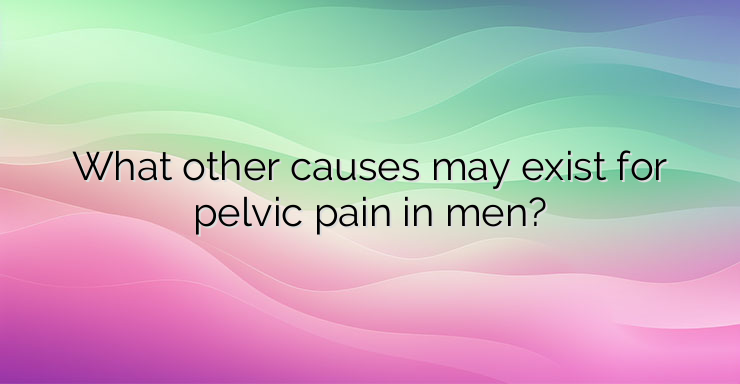Stricture of the urethra In men, the urethra (urinary canal) is a waste canal through which urine is removed from the body. In men, the urethra is also part of the reproductive system, as it also conducts the seminal fluid. A stricture of the urethra is a narrowing of its opening as a result of the formation of connective tissue in a certain area. The urethra can be affected due to various types of trauma. Pelvic pain is a common symptom, but there may be other symptoms such as: painful urination, blood in the urine, slow flow of urine, leakage of urine (incontinence), swelling of the penis, blood in the semen, urinary tract infections. Benign prostatic hyperplasia Benign prostatic hyperplasia is a condition characterized by an increase in the size of the prostate gland. It is not a cancerous condition. An enlarged prostate can put pressure on the urethra and bladder. This reduces the flow of urine and causes pain in the lower abdomen and pelvis. Other symptoms of benign prostatic hyperplasia include – painful urination, frequent urination, weak urine flow, incontinence, pain after ejaculation. Pudendal neuralgia The pudendal nerve is a major pelvic nerve. Pudendal neuralgia causes chronic pain in the perineum (complex of soft tissues located in the lower part of the pelvis), perianal and genital areas. Neuralgia can occur when the pudendal nerve is irritated or damaged. The main symptom is persistent pelvic pain, which may worsen when sitting. The pain can also be felt as – burning, stabbing, piercing pain. Other symptoms include – stiffness, increased sensitivity in the pelvis, frequent urination, sudden urge to urinate, painful sex, erectile dysfunction. Abdominal Adhesions Abdominal adhesions (adhesions in the abdominal cavity) are connective tissue (bands of fibrous tissue) formation in the abdomen. Bands of fibrous tissue can develop between the surfaces of organs (small and large intestines, liver, gall bladder, bladder, peritoneum) or between organs and the abdominal wall. Abdominal adhesions usually affect people who have undergone abdominal surgery. Most adhesions do not cause symptoms. If symptoms occur, abdominal pain may occur and spread to the pelvis. Abdominal adhesions can lead to intestinal obstruction. Intestinal obstruction Intestinal obstruction is an emergency. If intestinal obstruction is suspected and the following symptoms are present along with pelvic pain, it is necessary to seek medical help immediately. Symptoms of intestinal obstruction include – bloating, constipation, nausea, vomiting, gas retention, no peristalsis (movement) of the intestines. Bibliography: Montgomery L, et al. (n.d.). Chronic pelvic pain in men. Hodge BD, et al. (2019). Anatomy, abdomen and pelvis, appendix.


Leave a Reply